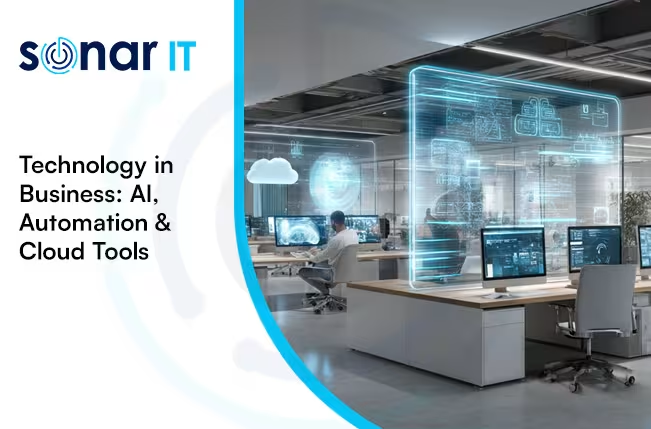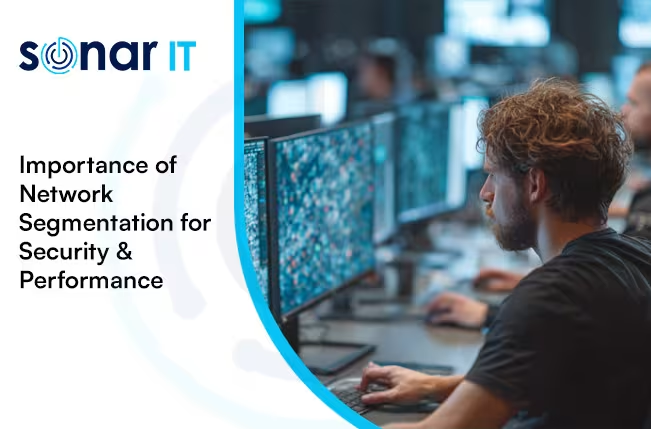Prepare for the Future: IT Support Trends To Watch Out for in 2023
It is no secret that many small businesses face the same, or even more challenging IT issues as larger corporations. What was once a luxury for those with deep pockets has become an essential tool to remain competitive in this era of digital transformation and emerging technology-driven economic landscapes. Therefore, it becomes increasingly important to understand emerging trends in the tech landscape, so CEOs and small business owners can plan ahead to ensure they are capitalizing on every advantage offered by new technologies as they develop over time. With 2023 quickly approaching – now is the perfect time to start preparing for the future of IT support and to identify any potential areas of concern when designing your own specific IT strategy. In this article, we will discuss various trends that you should be aware of in order to make sure you stay up-to-date on best practices in 2023. But before we do that, let’s take a quick look at some IT trends that made an impact in the IT industry in 2022.
2022 IT Trends That Impacted the IT Industry
A number of IT trends had significant impact on the IT industry in 2022, as businesses continued to adopt and use more sophisticated digital technologies. Here are some of the trends that began to dominate the landscape in the past year:
1. Edge Computing: Edge computing has become an increasingly important element of many organizations’ IT strategies, as it enables them to process data closer to its source and reduce latency times. This technology began to be widely adopted by businesses in 2022, as it offered them greater performance and improved energy efficiency.
2. 5G: The rollout of 5G networks across multiple territories in 2022 spurred growth in mobile-first applications, as it enabled businesses to deploy services more quickly and cheaply, while providing users with faster speeds and higher bandwidths.
3. Artificial Intelligence (AI): AI continues to grow in prominence and usage across different industries, with organizations of all sizes investing heavily in the technology for tasks such as predictive analytics and automated customer service bots. In 2022, we saw an increased demand for AI-driven solutions and their deployment across a wider range of applications.
4. Cybersecurity: As threats from cyber attackers evolve over time, organizations need to keep up with the pace if they are going to protect their networks from these malicious actors. We saw advanced security measures such as multi-factor authentication, encryption, and artificial intelligence-driven threat detection become even more pervasive within business operations in 2022.
5. Cloud Computing: Organizations continue to move away from traditional on-premises solutions towards cloud-based services for their IT needs, due to the cost savings and scalability benefits associated with cloud deployments. We saw this trend accelerate throughout 2022 as more companies looked towards cloud computing solutions for their workloads.
6. Blockchain Technology: Blockchain has had an impact on various sectors including finance and healthcare since its inception, however in 2022, we saw its further adoption within additional industries as its viability became increasingly apparent to organizations around the world.
7 Internet of Things (IoT): IoT devices such as sensors, cameras, and wearables grew in popularity amongst businesses looking for ways to automate processes and capture real-time data about their operations or products used by customers or employees in the field.
8 Open Source Software: Open source software offers businesses access to best-of-breed code without having to pay licensing fees or adhere to vendor lock-in. This has made open-source technology increasingly attractive to organizations, especially when combined with distributed systems like Kubernetes. We saw open-source software usage across multiple businesses specializing in different industries take off in the year 2022.
9 DevOps: DevOps is a continuous integration/continuous delivery (CI/CD) methodology used by developer teams to push out updates quickly at scale. This became increasingly popular in 2022 as businesses looked for tools that allowed them to quickly deploy code while still maintaining quality standards.
10 Automation: Businesses looking to not only improve efficiency but also reduce the amount of manual labor involvement required in routine tasks are turning to unmanned automation tools in increasing numbers. These tools enable tasks to be completed automatically through the use of robots and AI-powered systems, making tasks previously requiring large amounts of manual input more streamlined and cost-effective. Automation was widely adopted across various industries in the year 2022 due to its high potential footprint on business productivity gains and cost savings.

What CEOs and Small Business Owners Need To Understand About the Future of IT Support
The future of IT support is constantly evolving and changing. CEOs and small business owners need to be aware of the different options that are available to them in order to ensure that their business is able to keep up with the latest technology. One of the most important things that they need to understand is the importance of having a solid IT support plan in place. This means having a reliable team of experts who can help you with everything from network security to data backup and recovery.
It's also important to be aware of the latest trends in IT support. For example, cloud computing is becoming increasingly popular, and many businesses are starting to move their operations to the cloud. This can be a great option for smaller businesses that don't have the resources to set up and maintain their own IT infrastructure. Another trend that CEOs should be aware of is the rise of managed services. Managed services are a great option for businesses who want to outsource their IT needs, and they can provide a number of benefits, including reduced costs, improved efficiency, and increased security.
Overall, CEOs and small business owners need to stay informed about the latest changes in IT support so that they can make informed decisions about how best to equip their businesses for the future.
Key Trends That Will Impact IT Support in 2023
Predictions for the IT industry in 2023 suggest that the impact of digital technologies will continue to be felt across various areas. Here are ten expected developments and trends:
1. Automation will become increasingly sophisticated, with businesses tapping into artificial intelligence (AI) and robotic process automation (RPA) to streamline routine tasks and increase productivity.
2. Edge computing will continue to grow in importance, offering organizations incredible speed and scalability in terms of processing data closer to its source.
3. 5G networks will further expand their global reach, bringing even faster connections and higher bandwidths for mobile users.
4. Biometrics such as facial recognition technology are likely to be widely deployed for security purposes, allowing organizations to authenticate user access more quickly and reliably compared with traditional methods.
5. Cloud computing solutions are expected to become even more popular amongst businesses, enabling them to take advantage of cost-effective virtual storage services and software-as-a-service applications hosted remotely by providers.
6. Businesses will increasingly adopt blockchain technology for secure digital transactions, offering transparency and immutability that conventional systems cannot provide effectively.
7. Cryptocurrency has been growing in adoption over recent years and is expected to become even more commonly used – potentially replacing physical currency in some contexts over time thanks to its ability to facilitate secure peer-to-peer payments without intermediaries or costly transaction fees associated with other payment methods like credit cards or PayPal accounts.
8. The Internet of Things (IoT) will move beyond consumer applications towards industrial use cases, with sensors providing smart factories with access to real-time data which can then be used to optimize operations or detect issues before they develop into larger problems requiring expensive repairs or maintenance work orders.
9. Augmented Reality (AR) is likely to be utilized across multiple industries as a way of providing immersive experiences that allow users to engage more deeply than traditional static content can provide.
10. Quantum computing could become a viable option for complex problem-solving scenarios requiring vast amounts of processing power, due to its ability to leverage quantum mechanics effects such as superpositioning and entanglement to speed up calculations that would otherwise take computational resources longer to arrive at the same result.
11. The rise of artificial intelligence and machine learning is predicted to continue in 2023. Already, AI is being used to automate many routine tasks and processes, including IT support. By 2023, AI may be able to handle many routine tasks and problems on its own, freeing up IT staff to focus on more complex issues.
.webp)
Impact IT Trends in 2023 Will Have on the Security of Small Businesses
IT trends in 2023 are likely to have a positive impact on the security of small businesses. Edge computing, for example, will help organizations process data closer to its source and reduce latency times, making it more difficult for malicious actors to intercept sensitive information in transit. This will greatly help prevent financial phishing attacks and all other forms of malicious attacks. 5G networks will offer businesses faster speeds and higher bandwidths, enabling them to deploy services more quickly and cheaply while also increasing their security as data is transmitted more securely than before. Artificial intelligence (AI) powered solutions can be used to detect cyber threats before they become an issue, providing organizations with greater protection against malicious actors. Cloud computing offers improved scalability and cost savings advantages compared with traditional on-premises solutions, while at the same time allowing organizations to secure virtual storage services that protect confidential data from unauthorized access or potential breaches.
Blockchain technology is essential for securely storing digital assets such as cryptocurrency and allows businesses to authenticate users without releasing any personal information that could otherwise be vulnerable to attack. The Internet of Things (IoT) provides real-time data that can be used by businesses to optimize operations or detect issues before they develop into more significant problems requiring expensive repairs or maintenance work orders. Overall, the IT trends of 2023 present an array of opportunities for small businesses looking to improve their security systems.
Final Thoughts on the Future of IT Support
The future of IT support is looking bright. With the rise of new technologies, such as cloud computing and mobile devices, the need for IT support is greater than ever. IT support professionals and their skills are now therefore in high demand.
The future of IT support is also looking more and more automated. Technologies like artificial intelligence and machine learning are becoming more prevalent, and they are being used to automate many of the tasks that are traditionally done by IT support professionals. This means that IT support professionals will need to be more knowledgeable about these technologies in order to be able to effectively use them to help solve problems.
Overall, the future of IT support is looking very promising. New technologies are constantly emerging that can help IT professionals do their jobs more effectively.
As technology rapidly continues to evolve, it's more imperative for CEOs and small business owners to stay up-to-date on the latest trends. By understanding the key trends that will impact IT support in 2023, businesses can make the necessary preparations to remain competitive. With the right mix of new technologies, businesses can not only keep up with their larger counterparts but also take advantage of opportunities for growth.
Take Advantage of These New Technologies to Remain Competitive
There are a number of different new technologies that businesses can take advantage of in order to remain competitive. One such technology is the internet of things, which refers to the interconnectedness of devices and objects. This technology can be used to improve communication and efficiency within businesses, as well as to collect data that can be used to improve operations. Another important technology for businesses is big data. This is a term used to describe the large amounts of data that are now being collected and processed. Big data can be used to improve business decisions through the use of analytics and by identifying trends. In order to take advantage of these technologies, businesses need to ensure that they have the necessary infrastructure in place. They also need to ensure that they have staff who are able to use these technologies effectively.
As earlier mentioned, managed services are one great way to take advantage of these upcoming trends. If you need a managed service provider in London to help you take advantage of these rising IT trends, Sonar IT has your back.
.svg)






